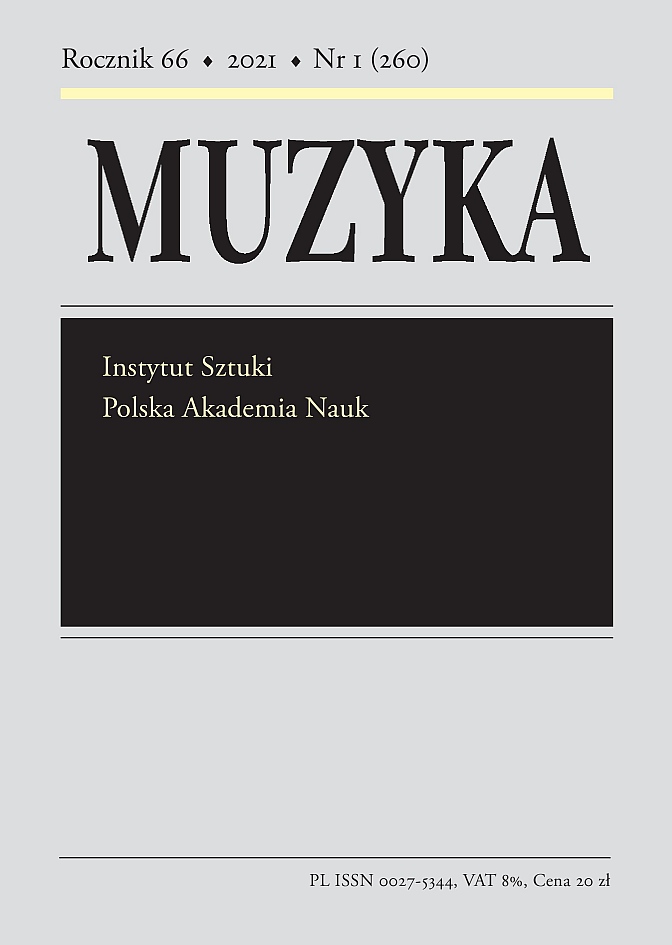Polski przekład "Ars et praxis musica" Zygmunta Lauksmina z 1798 roku i problemy nauczania śpiewu chorałowego na ziemiach polskich w XVII i XVIII wieku
The 1798 Polish Translation of Sigismundus Lauxmin’s ‘Ars et praxis musica’ and the Aspects of Plainchant Teaching in the Territory of Seventeenth- and Eighteenth-century Poland
Author(s): Dominika GrabiecSubject(s): Music
Published by: Instytut Sztuki Polskiej Akademii Nauk
Keywords: Zygmunt Lauksmin; Ars et praxis musica; music theory, music education; Gregorian chant; Cistercians; Szczyrzyc
Summary/Abstract: The handwritten copy of a hitherto unknown Polish-language plainchant handbook held in the Cistercian Fathers’ Library in Szczyrzyc (shelf mark S.II.8/2), produced in 1798 in Limanowa and entitled ‘Nauka y praktyka muzyczna do używania uczącey się młodzi w Kollegiach Societatis Jesu za pozwoleniem starszych przełożona w Wilnie’ [The teaching and practice of music for the use of pupils of Jesuit colleges, translated in Vilnius with the permission of superiors] has been identified by the author of this article as a translation of the Jesuit Sigismundus Lauxmin’s handbook ‘Ars et praxis musica’. The latter was first published in 1667 in Vilnius, and later reissued twice (1669, 1693). Its reception has not been studied thus far.Of the three editions, only several copies have come down to us. The discovery of a Polish translation made during the last years of the eighteenth century, more than a hundred years after the print’s last edition, sheds new light on the history of the handbook and its impact, which extended beyond Jesuit circles and the Baroque era, and also on aspects of plainchant teaching during the early nineteenth century. Lauxmin’s treatise was addressed to pupils and students as an aid to mastering the practice of plainchant. The author included no theoretical commentary and limited himself to the absolute basics, as well as practical methodological guidelines. The Polish translation was prepared in a different historical reality and is one of the relatively few surviving examples of how Polish musical terminology took shape and evolved during the eighteenth century. Indirectly, it also represents the state of musical education at the time and shows that, due to the lack of contemporary handbooks, teachers turned to educational aids from the previous era, adapting them for their current local needs.
Journal: Muzyka
- Issue Year: 66/2021
- Issue No: 1
- Page Range: 81-104
- Page Count: 24
- Language: Polish

